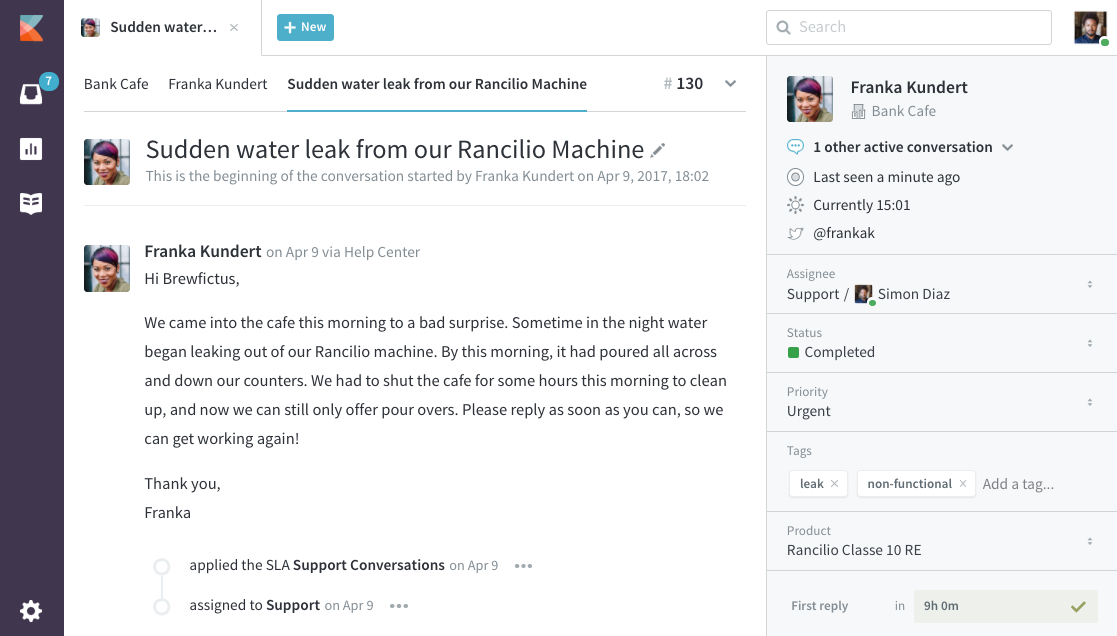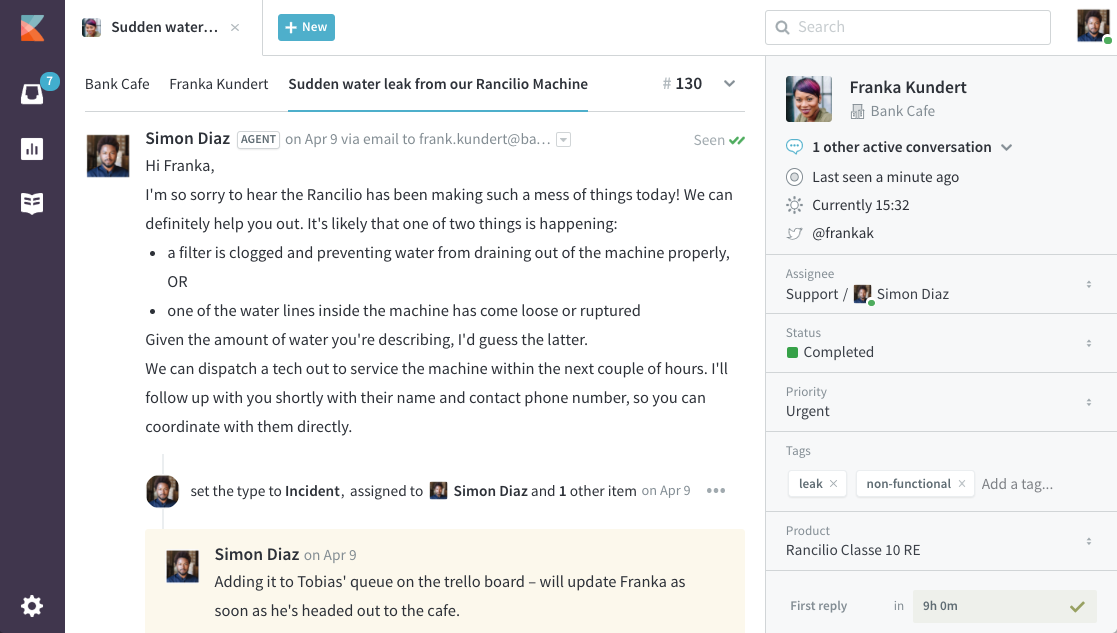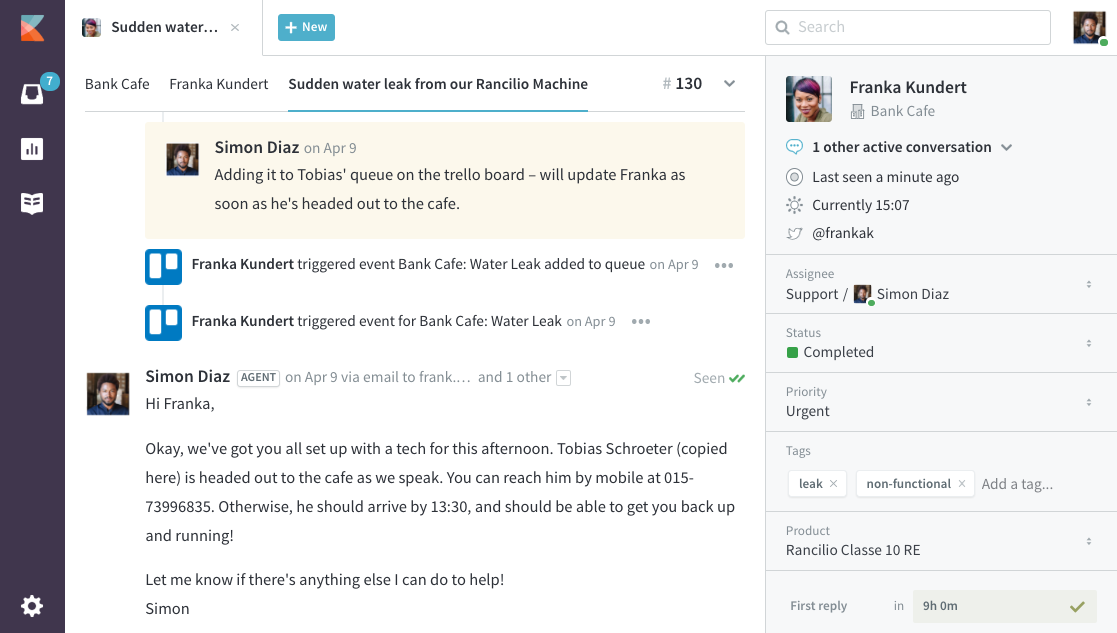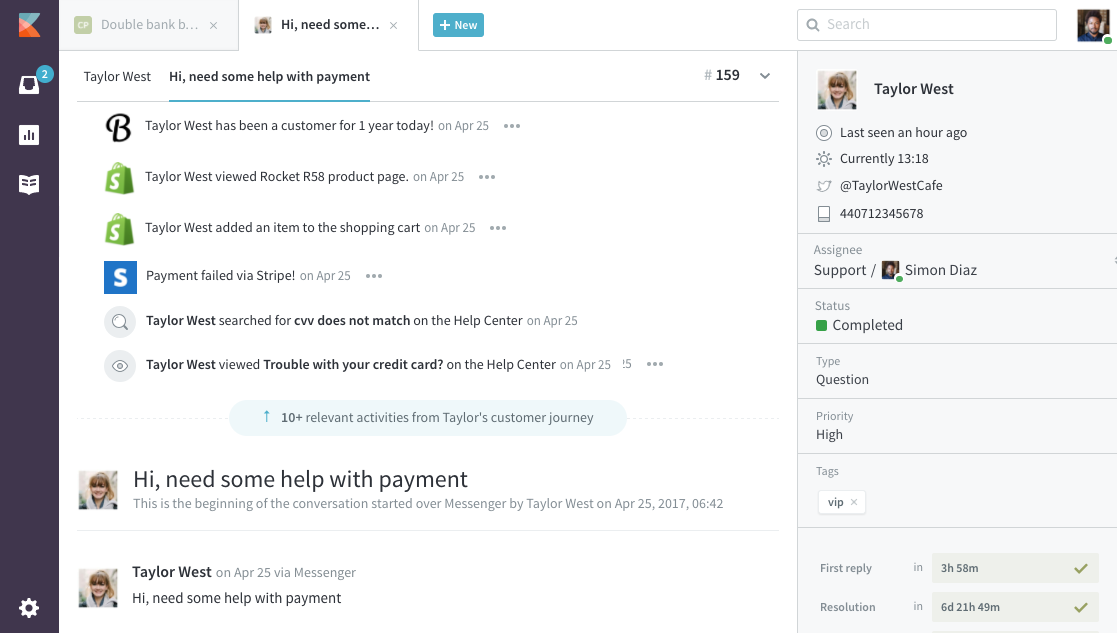Entering a small shop or boutique where they know your name and respect your business feels inclusive and welcoming. But as small businesses become bigger and build success, why don’t their service experiences ever scale?
Think about your favorite small business. It could be a cool cafe or a specialist store. Why do you love it so much? There’s probably several qualities that won you over. The service feels personal, consistent, and they always go the extra mile for you.
Excellent customer experiences happen a lot in local, independent coffee shops. Whether you go daily or once a week, the owner and baristas get to know you. They will greet you personally, appreciate your custom, and reward you with free coffees or extra stamps on your loyalty card.
But this can change when the coffee shop takes off and the manager ends up opening another branch at the other side of the city.
Suddenly you’re not greeted by name, and the server doesn’t know you like the coffee just so.
The casual chit-chat, the occasional coffee on the house, and the extra stamps on your loyalty card, all stops. The staff are clocked on but may not be switched on. It depends on the individual and it’s the luck of the draw for you.
This isn’t limited to physical stores, it’s the same for online businesses.
Delightful experiences don’t scale with businesses
If you’re an early adopter of an ecommerce store or service online, you get personal emails from the founders and the support team know who you are. You will be really rooting for the business to take off. But when it does, those delight experiences fall away or even stop. Why is that?
It’s about context.
When a company grows bigger, all of that knowledge about a customer shouldn’t be concentrated in the memory bank of one person. In the small restaurant the chef knows which regulars are ‘grill’ people and who are ‘dessert’ people.
We are short of context to help us give better support
When we scale up we still need customer context at our fingertips if we’re going to maintain those great experiences – but our support tools don’t let us do this.
Our support teams try to tune into the customer’s support journey, but that context is missing from legacy support tools. They don’t let us see how the customer has tried to help themselves. We are short of context to help us give better support.
Of course we have our memory, but the last time the brain got a software upgrade was 250,000+ years ago.
And besides, our support focus tends to be like a school teacher’s. We’re drawn to ensuring the best students are motivated and the worst behaved kids are closely watched – unfortunately leaves the kids in the middle without as much attention.
The same applies to our customers. Our memory and focus gets captured by the easy customers and the most demanding customers, but the casual customers are often left under-appreciated or unrecognized.
How do we get a clearer picture of our customers?
If you’re a small town coffee shop like Modern Grocer, you might try giving your loyal customers a personal code that your staff ring up on the cash register.
But if codes scramble before your eyes, it’s a lot of work for the customer to write down and remember. Luckily the Modern Grocer still accepts voice orders!
Scaling customer context with your business
The fundamentals of delight experiences are built on personal, consistent support that goes the extra mile for you customer.
Let’s go back to our coffee shop to find out how customer context can scale with your business to continue these delight experiences.
Providing customer delight like a small scale coffee shop
Brewfictus is the fictional online coffee equipment supplier that we use to explore customer scenarios and illustrate use cases here at Kayako. Let’s look at how their team works to scale delight.
Franka runs the coffee shop, Bank Cafe. In the morning she found a water leak happened overnight. She had to close the cafe and being unavailable to serve morning customers is eating into precious revenue.

Simon from Brewfictus support team steps in to help Franka and send Tobias to Bank Cafe to repair the issue.

Brewfictus uses Zapier to integrate Kayako with Trello to track maintenance requests. Through using journeys and collaborators, Brewfictus are able to acknowledge the issue, book in repairs, and respond to customers.
All Simon has to do is add this to a card in Trello and that context is right there for his support team to see if the problem persists.

Already Simon Diaz from Brewfictus Support team’s life is made a lot easier because he’s got the context of the customer’s journey in a timeline so he’s able to book in the repairs quickly and easily.
But Brewfictus can do far more than be a support team with efficient conversation turnaround. They’re able to create delight experiences to their loyal customers.
Creating delightful experiences as a habit
Simon Diaz moves to his next customer conversation. It’s with Rainbow City Cafe, which just opened their second location and is running into trouble processing a payment for a replacement part. Taylor West, manager of the new branch, is trying to problem solve it herself, but decides to get in touch with support.
As Brewfictus have integrated Kayako with Stripe and Shopify, Simon’s got real context around the steps Taylor has taken from a failed checkout to what Taylor’s already looked at in the Help Center.
Simon can see what the issue was in Stripe and why payment is failing, he’s also able to see what Help Center articles Taylor’s looked up to try and self-serve before she gets in touch on Messenger:

Once Taylor gets in touch, Simon’s able to use the context of Taylor’s support journey and deliver a personal response because he knows the exact steps she’s tried, and also avoids pointing Taylor back to the Help Center articles she’s already come across.
He can see Taylor is a loyal customer of one year and her lifetime value is worth $450.25, so he decides to upgrade her to priority shipping—a no brainer to make the most of this conversation with Taylor, and create a delightful experience and lasting impression for a loyal customer:
A clearer picture of your customers
Customer journeys now allow brands to scale personal customer experiences in a modern and widespread way through the use of applied customer data.
Your customer’s activity is collected in a “journey”- so you can see everything they’re doing at a glance. Imagine equipping your team with a complete, visual timeline of everything your customer has said and done, even before that first point of contact. Proactive, personal, and effortless.
According to Adobe’s CMS Wire, investing in technology that lets you see the full picture of your customer is one of the best investments you can make.
“Brands ought to invest in technology strategies that grant themselves a valuable awareness of every customer’s purchase history, all of their past (and cross-channel) interactions with the brand, and a developed sense of the products that should interest the customer in their future shopping.”
Providing consistent, personal support that can go beyond delight isn’t for the future, it’s here. What you see here for Brewfictus shows the power of context. The ability to witness the full customer journey can focus even a large team on the very details that make the boutique experience appealing.
Do you want to create this experience for your customers? Sign up today for a free trial or personalized demo of Kayako.